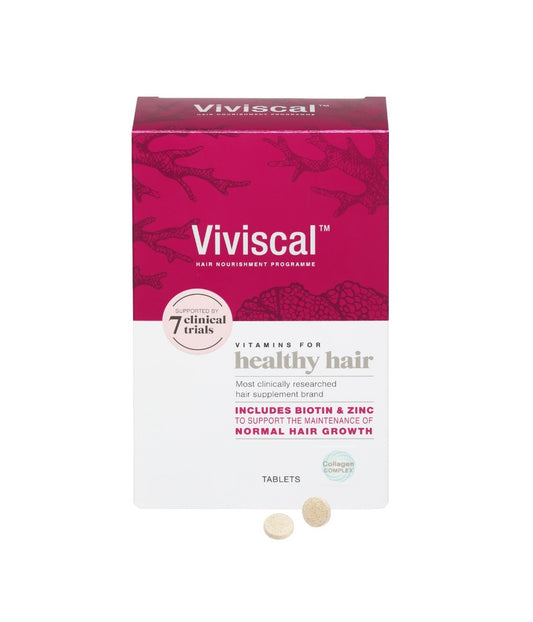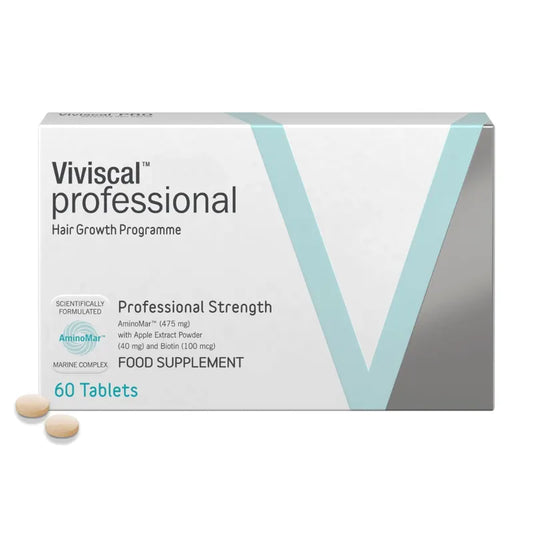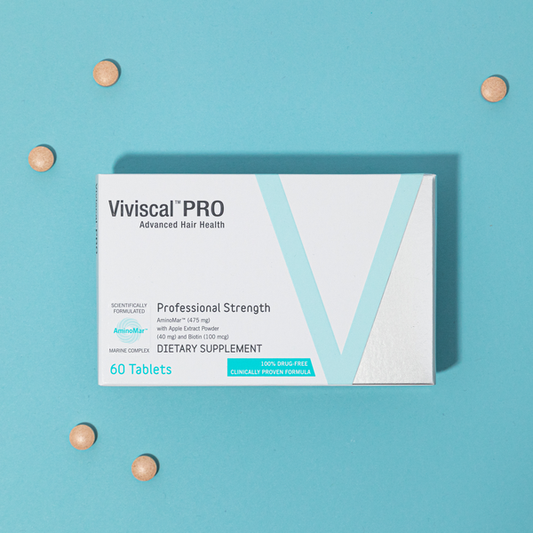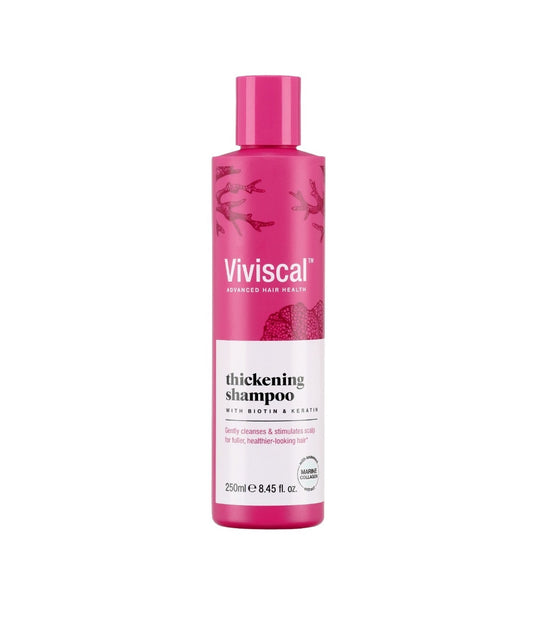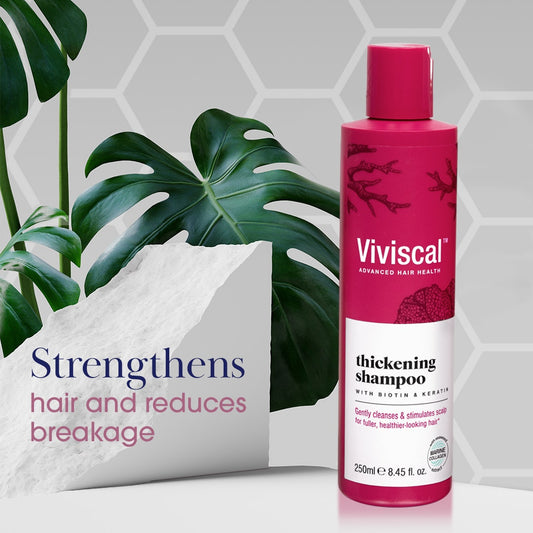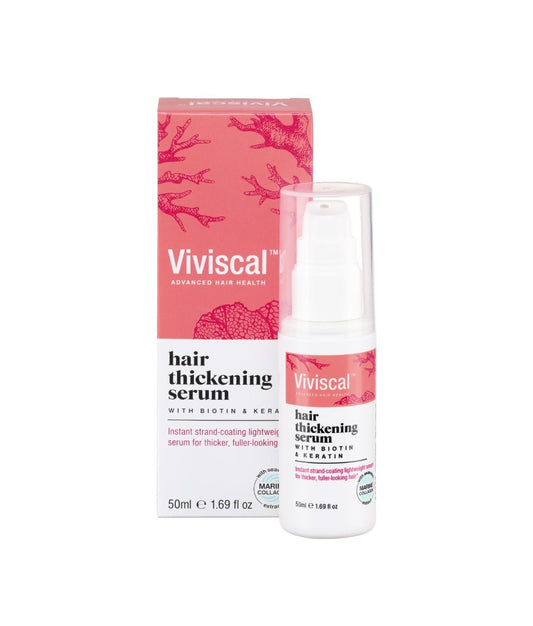A Q&A On Hair Growth
The hair on our bodies is an unusually cryptic substance. Very few people understand the process of hair growth and what’s going on in their heads (well, scalps). But we’re here to change that.
Here at Viviscal, we’re the hair health and growth experts. We have made it our business over the past 25 years to help the public get to grips with hair science and its benefits. During that time, we noticed that the same questions about hair growth cropped up repeatedly: How fast does hair grow? And to narrow things down further: How fast does hair grow in men and women?
Read on to find the answers to these hair growth questions and more.
How does hair grow?
Firstly, let’s explain the makeup of hair and get to grips with its structural components.
Each strand of hair is made up of two parts: the shaft and the root. The shaft is what you can see outside of the scalp (what you brush) and the root is within the skin. This root is responsible for feeding the hair by obtaining nutrients that are present in blood. The hair root is nestled within a hair follicle, connected to a sebaceous (or oil) gland. This is what makes our hair shiny and, in some cases, ‘greasy’.
Now for the part where hair is made…
Thanks to the papilla, the hair root enjoys a regular blood supply from which it can extract the relevant nutrients it needs for growth. The root is anchored in place via the hair bulb (in which new hair cells are constantly being produced). These new cells congeal together and harden, eventually forming a hair strand. A chain reaction begins to form where more cells add onto this strand from below, pushing the hair out through the skin. This is known as hair growth.
The rate at which these cells form, harden and push the hair out causes a single strand of human hair to grow at about 1cm per month. The hair on our heads grows at a much quicker rate than, say, facial hair and body hair. So, if you're wondering how fast hair grows in a month, you can expect around 1cm growth. But there are factors to consider here.
Hair growth phases
This process of hair growth falls under a greater process of cycles. Four, to be precise. These are:
- Anagen (growing)
- Catagen (transition)
- Telogen (resting)
- Exogen (hair falling)
It is the first of these phases we are the most interested in here. However, you can find more information on all of them on our 'What is Viviscal?' page.
As people get older, their anagen phase shortens, meaning fewer new hairs are produced. This is why baldness is more common in middle-aged and elderly people. The end of the anagen phase is marked by a separation of the root and the papilla, after which hair no longer enjoys a constant supply of blood and nutrients. So, eventually, after several months, the hair falls out.
Then, new hair cells begin to multiply at the base of the ‘vacant’ hair follicle and the process begins again.
How fast does hair grow?
The most commonly quoted figure in response to this question is 15cm (or 6 inches) per year. This would fit with the 1cm that’s estimated per month. However, a generalised number fails to account for the variations in hair types and lifestyles that can influence hair growth.
For example, Caucasian hair differs from Asian and African hair in numerous ways, such as hair density and growth angle. In 2005, the International Journal of Dermatology found that Asian hair grows fastest, while African hair grows slowest. According to its findings, the average hair growth rates were:
- Asian females: nearly 6 inches per year
- African females: 4 inches per year
- Caucasian females: a little more than 5 inches per year
The rates for male participants weren’t that different to those of women. It is also believed that factors such as seasonality can affect hair growth too. In the summer, hair is thought to grow faster due to dietary changes, hormone shifts and increased exposure to UV radiation.
So, how fast does hair grow? Whether you're looking at a month or a year, there isn’t really one solid rate as there are too many factors to consider. It differs for everyone.
How fast does hair grow in men and women?
When it comes to hair growth, how fast does it grow on women and men and are there any differences to be aware of?
On average, women have longer hair. Does this mean their hair grows faster?
A comparative study by scientists Van Neste and Rushton (2016) sought to find out just that. Their study analysed 59,765 anagen-phase hairs (half control, half patients) and found that the LHGR (linear hair growth rate) was higher in women than in men. They also found that thicker hair grew quicker than thinner hair on average and that LHGR correlates directly to hair diameter.
The study also concluded that greater rates of hair loss could be confidently attributed to a significant reduction in LHGR.
How to grow hair faster
We've answered the classic how fast does hair grow question. Now for another popular query: How do I get my hair to grow quicker?
We’ve heard this one before! Before we get into it, let’s remember the rate at which hair grows is determined by the length of the anagen (growth) phase. So, to target the rate of hair growth directly, you need to home in on this phase, especially since its duration decreases over time.
The best way to do this is by supplementing your diet with minerals and vitamins such as zinc, iron, biotin and vitamin C – all of which can be found in our hair growth supplements for men and women.
However, there are other ways to improve the appearance, health and condition of your hair, possibly causing an increase in the growth rate – or at least reducing breakage and dead hair.
Scalp massages
Since the scalp is where your hair is produced, it makes sense to treat it with care.
Temperature is a significant factor in scalp health. Running the shower too hot can severely dehydrate your skin and can be rough on your hair. When rinsing out the product, turn the temperature down. Also, when applying the product, especially shampoo, take time to really rub it into your scalp, removing dead skin cells and stimulating the area, increasing blood flow to it.
Avoid physical damage
This is usually caused by over-styling or the use of excessive heat. Try to go easy on your hair and let it dry without heat. If you do have to use heat, a heat protectant spray is ideal.
Dry your hair gently before going to bed to avoid pillowcase abrasion. If possible, try to sleep on a silk pillowcase as this will protect your hair from friction.
Also, take the time to care for your hair according to your hair type. What works for those with straight hair might not be suitable for those with waves, kinks or coils.
Balanced diet
Hair needs a strong supply of nutrients to grow and, while you can supplement your diet with hair growth vitamins such as ours, these vitamins should also be provided naturally in what you eat.
Aim to eat a balanced diet of proteins and vegetables, especially foods that contain iron, zinc, vitamin C and biotin. Fruits, nuts, grains and oily fish are ideal additions to everyday meals.
Destress
Another reason why your hair might not be growing so fast is stress. Stress has been a core contributor to hair loss for centuries in various forms such as:
- Telogen effluvium: stress pushes hair follicles out of the anagen (growth) phase and into the telogen (resting) phase, causing new hair to stop being produced.
- Trichotillomania: excessive stress levels may cause sufferers to physically pull out their hair (especially from the scalp, eyelashes and eyebrows).
- Alopecia areata: the body’s immune system attacks the hair follicles, causing hair loss.
Get regular haircuts
Getting your hair trimmed regularly can help with hair growth. While it might seem counterproductive, removing the dead ends of your hair reduces the amount of breakage and makes hair seem longer and stronger.
Does castor oil grow hair?
Many people use alternative treatments such as castor oil on their hair. Historically, castor oil has been used to treat both hair loss (especially alopecia areata) and to aid faster hair growth. As well as this, the oil has been applied to dry, flaky scalps.
However, there is no clinical evidence to support the use of this substance in treating hair-related conditions.
Does coconut oil help hair grow?
Coconut oil is used by many to help grow hair. But does it work? This fatty oil is used all over the world and there have been many studies into its health benefits as a skin product. However, on hair, there is not yet enough research to tell.
Many use it on their scalp and, while this helps nourish hair follicles, it is unproven as to whether this accelerates hair growth. But coconut oil is said to be good for:
- Improving scalp health
- Fighting fungal infections
- Reducing dandruff
- Soothing irritated skin
- Sealing in moisture
- Treating split ends
- Protecting against heat damage
Does shaving make hair grow thicker?
While many people believe hair grows back thicker and darker after shaving, this is not the case. According to the Mayo Clinic, shaved hair will not grow back thicker or different in colour. However, it may feel different when it grows back.
This difference in feel is due to the ‘bluntness’ of new hair after shaving. When you shave, you essentially give the hair a blunt tip which may well feel coarse – that’s the ‘stubbly’ feeling.
This makes the hair feel more noticeable. However, shaving is not a cause of hair growth change. If your hair does suddenly change (perhaps a sudden increase or decrease in hair), speak to your GP as this could be a sign of an underlying medical condition.
Try Viviscal today
If you’re looking for a simple yet effective solution to hair loss, try Viviscal’s hair growth vitamins for men and women today.
If you have any other questions about our range of products, get in touch with our friendly team of experts, browse through our FAQ page, or find out more information on our blog.
Use a Volumizing Shampoo & Lightweight Conditioner
How do I get more volume in my thin, fine hair? We get this question a lot at Vivisical™! Many women, especially those over 40, struggle with thinning hair and lack of volume. But don’t worry – we’ve got you covered with expert tips and tricks to add volume to thin hair. Whether you’re dealing with age-related hair thinning or naturally fine strands (or both!), these tips will help you achieve fuller-looking, more voluminous locks.
Understanding Thin Hair
Before diving into solutions, let’s address why some of us have fine or thin hair:
Genetics – Your DNA largely determines your hair type. If you have a parent with thin hair, you’re much more likely to have thin hair yourself.
Aging – Nearly everyone experiences some hair loss with age. Plus, hair follicles can shrink with age, leading to finer hair.
Hormonal changes – Pregnancy, menopause, and thyroid issues can affect hair thickness.
Nutritional deficiencies – Lack of certain vitamins and minerals can impact hair health.
Stress – High stress levels can lead to temporary thinning.
Thin hair presents unique styling challenges, like:
- Lack of body and bounce
- Difficulty holding styles
- Appearing flat, especially at the roots
- Becoming greasy more quickly
But don’t despair! You can transform the appearance of thin or fine hair with the proper techniques and products.
15 Secrets to Add Volume to Fine & Thin Hair
Before diving into solutions, let’s address why some of us have fine or thin hair:
1. Use a Volumizing Shampoo & Lightweight Conditioner
How do I get more volume in my thin, fine hair? We get this question a lot at Vivisical™! Many women, especially those over 40, struggle with thinning hair and lack of volume. But don’t worry – we’ve got you covered with expert tips and tricks to add volume to thin hair. Whether you’re dealing with age-related hair thinning or naturally fine strands (or both!), these tips will help you achieve fuller-looking, more voluminous locks.
2. Skip the Towel
When drying freshly washed hair, a regular cotton terry towel can rough up the cuticle and cause breakage to fragile, wet hair. Instead, gently wrap hair in an old T-shirt or a bamboo hair wrap designed to absorb moisture without damaging it.
3. Choose a Thickening Serum
After you’ve washed your hair, apply a lightweight leave-in product like Vivisical™ Hair Thickening Serum. Vivisical™ Hair Thickening Serum coats each strand to reduce frizz, leading to thicker, fuller-looking hair^^. Whether you air dry or blow dry your hair, this is a great addition to your routine.
^^Use in conjunction with Vivisical™ Thickening Shampoo and Strengthening Conditioner

Vivisical™ has been researched, and in just one of the many studies, the people who took this supplement had more hair after taking it three months, and less hair shedding.
-Dr. Brian Heil, Doctor of Trichology
Frequently Asked Questions
How do I get more volume in my thin, fine hair?
To add volume to thin, fine hair, start with a volumizing shampoo and conditioner. Use styling products like mousse or root-lifting spray on damp hair, then blow-dry hair upside down for maximum lift. Finish with a texturizing spray or dry shampoo to add body and grip to your style.
How can I make my thin hair look thicker?
To make thin hair appear thicker, opt for a cut with long layers that create movement without losing much fullness. Use thickening products that coat the hair shaft, and consider strategic coloring techniques like highlights and lowlights to add depth and dimension. Styling hair with textures such as waves or curls can also make hair look thicker than sleek, straight styles.
How do I get more volume in my thin, fine hair?
To combat flat hair on top, apply a volumizing root spray to damp roots before blow-drying. Use the “twist and clip” method: twist sections of damp hair, clip them to your head, and let them dry for added lift. Additionally, try changing your part or using a zigzag part to create instant volume at the crown.








